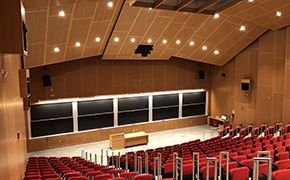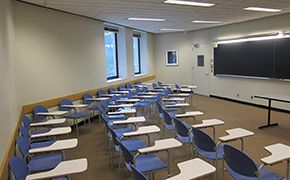Instructor Insights pages are part of the OCW Educator initiative, which seeks to enhance the value of OCW for educators.
I think the evening Common Room is one of the best elements of the class . . . We find students working individually as well as collaboratively, and periodically interacting with the staff, either at the board or at their desk—very immersed and engaged in the homework problems, and in sorting out ideas and misconceptions related to these.
— George Verghese
Below, Professor George Verghese describes how the teaching team facilitated 6.011 Signals, Systems and Inference.
What Makes this Subject Distinctive?
Supporting Students with Supplementary Opportunities
How Would You Like Your Grade: Regular, Lower-Friction, or Project-Based?
Curriculum Information
Prerequisites
The essential prerequisites for this course are 6.003 Signals and Systems and 6.041A Intro to Probability I (or equivalents), and the 18.03 Differential Equations material related to solving linear, time-invariant systems of first-order differential equations using eigenvalues and eigenvectors.
Requirements Satisfied
6.011 can be applied toward a Bachelor of Science in Electrical Engineering and a Bachelor of Science in Electrical Engineering and Computer Science.
Offered
Every spring semester
Assessment
The students' grades were based on the following activities:
Instructor Insights on Assessment
The teaching team offers students three grading schemes in the course.
Student Information

Breakdown by Year
Undergraduate and graduate students
Breakdown by Major
Mostly electrical engineering and computer science
Typical Student Background
The students in the class have increasingly varied backgrounds, varying in the extent of their general academic preparation, in their curricular concentrations, in their taste for theoretical material versus applications, and in their comfort with the prerequisite material (from a first course in signals & systems, and a first course in probability). This can make the class challenging for both the lecturer and the students, but having the lectures supplemented through recitation sections conducted by a professor, optional tutorials conducted by the teaching assistants, evening “Common Room” hours facilitated by one or two of the staff, and a textbook written specifically for this course all help to deal with the diverse student backgrounds and motivations.
During an average week, students were expected to spend 12 hours on the course, divided as follows:
In Class
- Met 2 times per week for 1 hour per session; 24 sessions total.
- Class sessions were lecture-based.
Recitation
- Met 2 times per week for 1 hour per session; 24 sessions total.
- Recitations provided an opportunity for students to clarify and work with concepts and results from lecture in a more informal and interactive setting.
Out of Class
Outside of class students completed assignments and had the opportunity to attend Common Room sessions and optional tutorials.
Semester Breakdown
| WEEK | M | T | W | Th | F |
|---|---|---|---|---|---|
| 1 |  |
 |
 |
 |
 |
| 2 |  |
 |
 |
 |
 |
| 3 |  |
 |
 |
 |
 |
| 4 |  |
 |
 |
 |
 |
| 5 |  |
 |
 |
 |
 |
| 6 |  |
 |
 |
 |
 |
| 7 |  |
 |
 |
 |
 |
| 8 |  |
 |
 |
 |
 |
| 9 |  |
 |
 |
 |
 |
| 10 |  |
 |
 |
 |
 |
| 11 |  |
 |
 |
 |
 |
| 12 |  |
 |
 |
 |
 |
| 13 |  |
 |
 |
 |
 |
| 14 |  |
 |
 |
 |
 |
| 15 |  |
 |
 |
 |
 |
| 16 |  |
 |
 |
 |
 |
 No classes throughout MIT
No classes throughout MIT Lecture
Lecture Problem set due
Problem set due No class session scheduled
No class session scheduled Recitation
Recitation Quiz
Quiz





 15% Participation
15% Participation 20%
20%  25%
25%